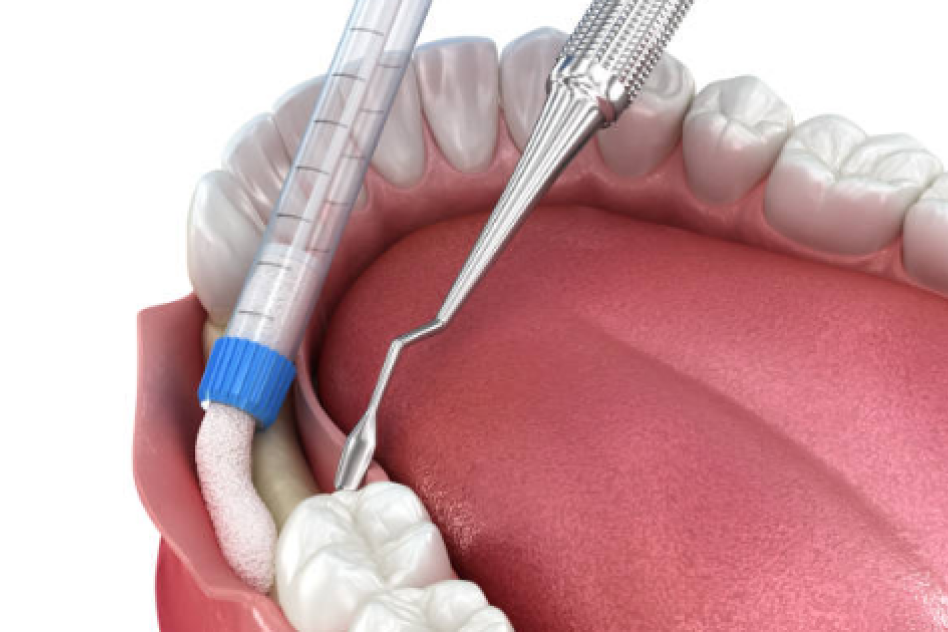A bone graft is a dental procedure used to restore or rebuild bone in areas where it has deteriorated or is insufficient, often due to tooth loss, gum disease, or trauma.
Bone grafting is commonly performed to prepare the jaw for dental implants, as sufficient bone density and volume are crucial for the stability and success of the implant.
The procedure involves placing bone material, either from the patient’s body, a donor, or a synthetic source, in the deficient area to promote new bone growth.

Process:
- Initial Consultation and Evaluation: The dentist or oral surgeon will conduct a comprehensive examination, including X-rays or a CT scan, to assess the extent of bone loss and determine the best approach for the graft. The patient’s medical history and overall oral health will also be considered.
- Discussion and Treatment Planning: The dentist will discuss the need for a bone graft, explain the procedure, and review the different types of graft materials available:
- Autograft: Bone harvested from the patient’s own body, typically from the chin, jaw, hip, or tibia.
- Allograft: Bone obtained from a human donor.
- Xenograft: Bone derived from an animal source, such as bovine (cow) bone.
- Alloplast: Synthetic bone material, often made of biocompatible materials like calcium phosphate.
- Preparation and Anesthesia: Before the procedure, the dentist will numb the area with a local anesthetic to ensure comfort. For more complex cases or if the patient feels anxious, sedation or general anesthesia may be used.
- Bone Grafting Procedure:
- The dentist will make an incision in the gum tissue to expose the area where the bone graft is needed.
- The bone graft material is placed in the area where the bone is deficient. If an autograft is being used, the bone will first be harvested from the donor site.
- The bone graft is then carefully shaped and positioned to fill in the defect or build up the jawbone. In some cases, a membrane may be placed over the graft to protect it and encourage bone growth.
- The gum tissue is repositioned and sutured back into place.
- Healing and Bone Regeneration: After the procedure, the bone graft acts as a scaffold, allowing new bone cells to migrate into the area and gradually rebuild the bone. This process, called osseointegration, may take several months, during which the graft material is slowly replaced by the patient’s own bone.
- Post-Procedure Care: The dentist will provide detailed aftercare instructions to promote healing and prevent complications:
- Take prescribed medications, such as antibiotics or pain relievers, to manage discomfort and prevent infection.
- Avoid strenuous activity, smoking, or using straws to protect the graft site.
- Maintain good oral hygiene by gently brushing and rinsing with an antimicrobial mouthwash as recommended.
- Follow-Up Appointments: The dentist will schedule follow-up visits to monitor the healing process and ensure the graft is integrating well. X-rays may be taken to assess bone growth and determine when the area is ready for any further procedures, such as dental implants.

